Carbon Nation est un film américain de genre Documentaire
Carbon Nation (2011)
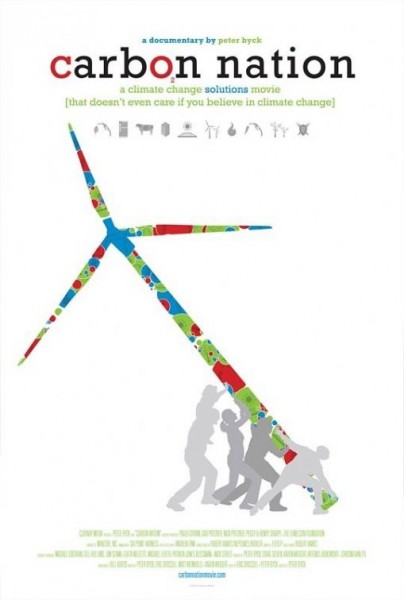
Si vous aimez ce film, faites-le savoir !
- Infos
- Casting
- Infos techniques
- Photos
- Vidéos
- Passages TV
- Citations
- Personnages
- Musique
- Récompenses
Durée 1h26
OrigineEtats-Unis
Genres Documentaire
Themes L'environnement, Documentaire sur l'environnement, Documentaire sur les technologies, Film catastrophe
Note68%










Carbon Nation est un film documentaire américain de Peter Byck à propos de l'empreinte énergétique et les solutions pour la réduire. Ce film est sorti en 2010.
Plutôt que de dénoncer et mettre l'accent sur l'utilisation par l'homme des énergies fossiles, Carbon Nation présente, à travers les interviews d'experts en divers domaines, de défenseurs des énergies renouvelables ou de chefs d'entreprise, des solutions concrètes permettant de réduire ou de se passer des énergies fossiles.
Parmi les personnes interrogées figurent l'entrepreneur et fondateur de Virgin Richard Branson, l'ancien directeur du NREL Denis Hayes et l'écologiste Van Jones. Le journaliste Bill Kurtis assure la narration du documentaire.
Commentaires
Postez un commentaire :
Suggestions de films similaires à Carbon Nation
Il y a 8965 ayant les mêmes genres cinématographiques, 2813 films qui ont les mêmes thèmes (dont 17 films qui ont les mêmes 4 thèmes que Carbon Nation), pour avoir au final 70 suggestions de films similaires.Si vous avez aimé Carbon Nation, vous aimerez sûrement les films similaires suivants :

spOILed (2011)
, 1h30Origine Etats-Unis
Genres Documentaire
Thèmes L'environnement, Documentaire sur l'environnement, Documentaire sur les technologies, Film catastrophe
Note66%





Spoiled begins investigating energy myths by asking if people today believe we are "addicted" to oil and if oil is destroying our lives the way other addictions do. The energy movie documentary explores human relationship to oil addiction, and reveals a pattern of misinformation, disinformation, and deception about energy myths.
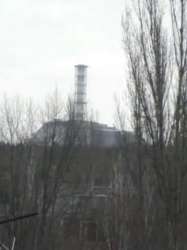
White Horse (2008)
, 18minutesOrigine Etats-Unis
Genres Documentaire
Thèmes L'environnement, Documentaire sur l'environnement, Documentaire historique, Documentaire sur le nucléaire, Documentaire sur les technologies, Film catastrophe
Note69%





The beginning of the film starts with DeLeo, Bisson and Surkov driving through Kiev. This is introduced as the beginning of their journey to Pripyat, near the ground zero of Chernobyl. Once they reach the outpost outside the exclusion zone, we see that the area surrounding Pripyat is very deserted and dark. Once in the city, we see Surkov's old home, which he explains has been robbed of almost all its belongings due to looters. Yet there are still some mementos in the old apartment, including the wallpaper he and his mother put up, the training bars his father bought for him, an old rubber ball he claims was his favorite and a white horse poster plastered on the wall of his old bedroom. The pain he feels is evident. When he sees an old calendar on a door, he rips a large portion off, claiming "the year ended on April 26th". Outside the door of the apartment, he remarks how he wishes he could stay forever. He throws his old ball through the door and walks out of the apartment complex. The film ends with Surkov snapping some twigs in an old courtyard and then an image of the car they traveled in leaving the exclusion zone.

The Hand of Franklin (2014)
Genres Documentaire
Thèmes L'environnement, La mer, Transport, Documentaire sur l'environnement, Documentaire sur les technologies, Film catastrophe

Sludge (2005)
Origine Etats-Unis
Genres Documentaire
Thèmes L'environnement, Documentaire sur le monde des affaires, Documentaire sur l'environnement, Documentaire historique, Documentaire sur les technologies, Film catastrophe
 , 40minutes
, 40minutesOrigine Etats-Unis
Genres Documentaire
Thèmes L'environnement, Documentaire sur le monde des affaires, Documentaire sur l'environnement, Documentaire historique, Documentaire sur les technologies, Film catastrophe
Note57%






Dams: The Lethal Water Bombs (2011)
, 21minutesRéalisé par Sohan Roy
Genres Documentaire
Thèmes L'environnement, Documentaire sur l'environnement, Documentaire historique, Documentaire sur les technologies, Film catastrophe
Note72%





The Banqiao Dam in China, with its 492 million cubic meters of water, has a similar capacity to the Mullaperiyar Dam, with 443 million cubic meters. When it was destroyed by torrential rains in 1975, it claimed the lives of 250,000 people. This documentary is based on the possibility of a similar disaster happening to the Mullaperiyar Dam in India.
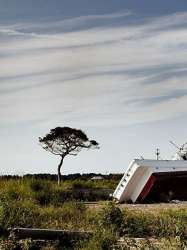
My Atomic Aunt (2013)
Genres Documentaire
Thèmes L'environnement, La mer, Transport, Documentaire sur l'environnement, Documentaire historique, Documentaire sur le nucléaire, Documentaire sur les technologies, Film catastrophe, Catastrophe sismologique
Note67%





Surviving the Tsunami brings together social, environmental, and personal perspectives of the national catastrophe of the Fukushima nuclear meltdown. In the documentary, Kyoko Miyake travels back to her hometown in Namie, Fukushima, to revisit her old life and assess the trauma still lingering from the disaster. She revisits Namie, her mother's hometown and meets the people who depended on the success of the nuclear plant for their livelihood. The film also follows Bunsei Watanabe and Kyoko Miyake's Aunt Kuniko, two people who hope for the rejuvenation of Namie, despite the disaster that has occurred. Despite having lost family, friends, and jobs due to the meltdown and subsequent fear of the contamination zone, these two individuals are determined to rebuild their towns and neighborhoods and bring back the sense of community they once had. The film follows the residents of Namie, with emphasis on the experiences of Aunt Kuniko, as they come to terms with the reality of living in or near the "radiation zone" left in the wake the plant's nuclear meltdown. Surviving the Tsunami offers a different perspective on Japanese culture, national identity, human adaption, and global nuclear energy and proliferation.
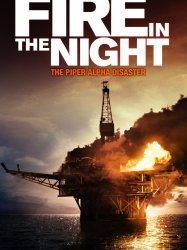
Fire in the Night (2013)
, 1h34Origine Royaume-uni
Genres Documentaire
Thèmes L'environnement, La mer, Transport, Documentaire sur l'environnement, Documentaire historique, Documentaire sur les technologies, Film catastrophe, Catastrophe navale
Note75%





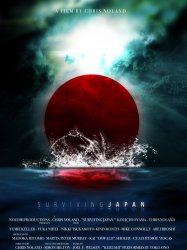
3.11: Surviving Japan (2013)
, 1h30Réalisé par Simon Hilton
Genres Documentaire
Thèmes L'environnement, La mer, Transport, Documentaire sur l'environnement, Documentaire historique, Documentaire sur le nucléaire, Documentaire sur les technologies, Film catastrophe, Catastrophe sismologique
Note81%





The film spans from March 11, 2001 to September 19, 2011, starting with Noland's own experience in the Tōhoku Earthquake and tsunami, Fukushima Daiichi nuclear disaster followed by volunteer activities in Ofunato
 Connexion
Connexion
